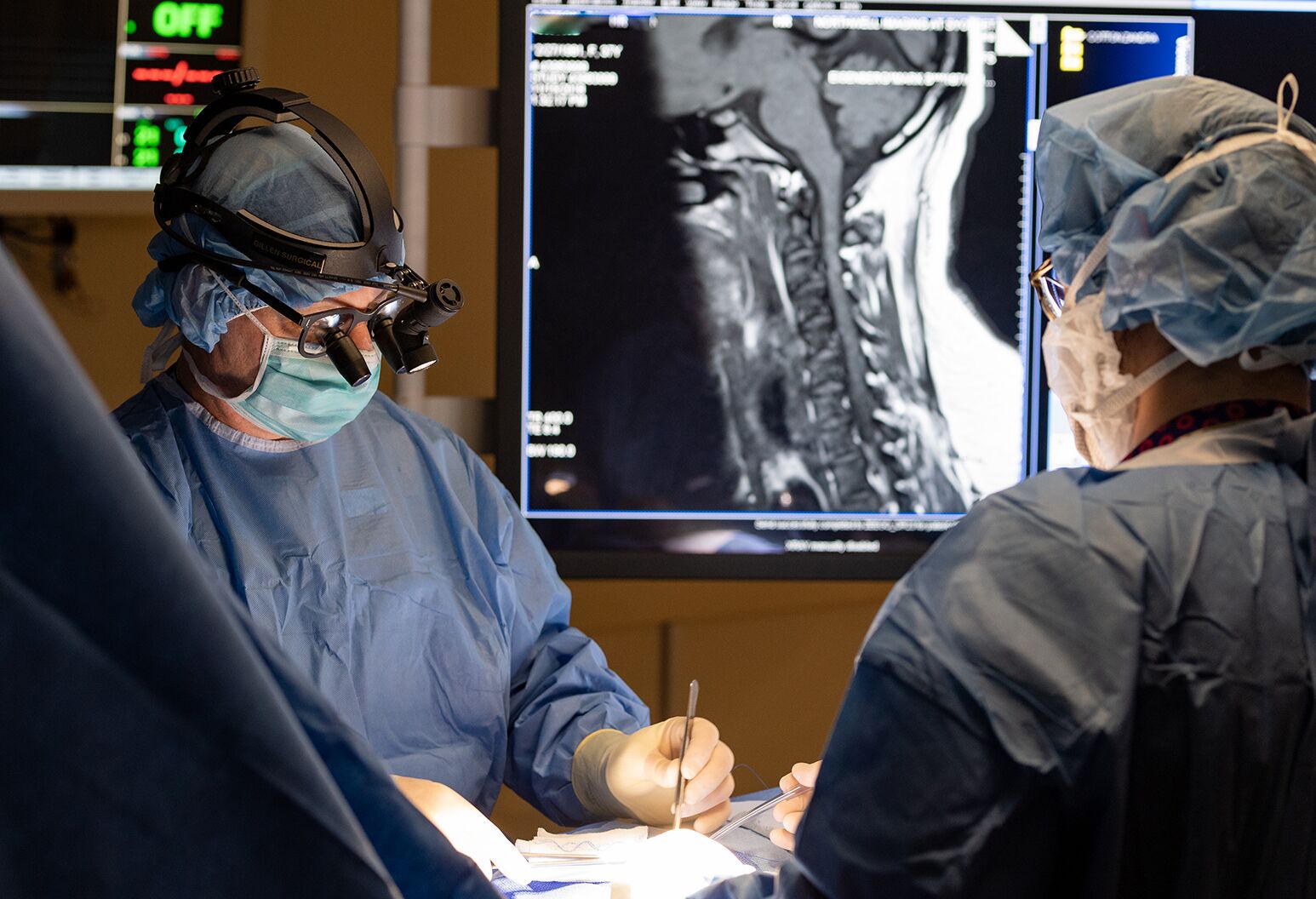Patient Success Stories with the Best Spine Surgeons in St Louis MO
Patient Success Stories with the Best Spine Surgeons in St Louis MO
Blog Article
An Overview of Spine Problems That Frequently Cause Surgical Therapies
Spine problems such as herniated discs, back stenosis, and degenerative disc disease regularly demand surgical interventions when conventional therapies stop working to relieve consistent signs. Comprehending the nuances of each problem and the matching surgical choices, such as discectomy or back blend, is important for effective management.
Herniated Discs
Although many people with herniated discs might discover relief through conventional treatments, surgical procedure becomes an essential factor to consider when signs linger or worsen - best spine surgeons in st louis mo. A herniated disc occurs when the soft internal gel of a spine disc protrudes via its outer layer, possibly leading and pressing nearby nerves to discomfort, tingling, or weakness in the extremities
Conventional monitoring commonly includes physical treatment, pain medicines, and corticosteroid injections, which intend to decrease swelling and enhance function. Nonetheless, in instances where these approaches fall short to relieve debilitating symptoms, surgical choices might be checked out.
One of the most common procedure for herniated discs is a discectomy, which entails the removal of the herniated part of the disc to eliminate pressure on the affected nerve root. In extra severe cases, spine blend might be required to support the influenced vertebrae.
Clients are suggested to talk about the possible risks and advantages of surgery with their doctor to make a notified choice. Eventually, the goal of any type of surgical intervention is to bring back function, minimize pain, and improve overall quality of life for individuals struggling with herniated discs.
Back Stenosis
Spinal constriction occurs when the rooms within the back slim, causing boosted pressure on the spinal cord and nerves. This problem can create in numerous areas of the back, including the back and cervical areas, commonly as a result of age-related modifications, such as degenerative disc illness, arthritis, or thickening of ligaments.
Clients with back stenosis may provide with signs and symptoms that consist of pain, pins and needles, tingling, or weak point, largely in the arms or legs. These symptoms can be intensified by activities that entail standing or walking, typically leading individuals to seek alleviation with conventional treatments like physical therapy, medicines, or epidural steroid shots.
Nonetheless, when these non-surgical treatments fail to supply sufficient alleviation, medical options might be considered. Common surgical treatments for spine stenosis include laminectomy, which involves the removal of part of the vertebra to ease stress, and spinal combination, which stabilizes the affected area.
Spondylolisthesis
Spondylolisthesis takes place when one vertebra slides forward over another, causing imbalance of the back. This problem can result from various aspects, consisting of congenital problems, injury, or degenerative changes in the spinal column. It is most generally observed in the lumbar region, specifically at the L4-L5 and L5-S1 levels.

Treatment options vary based upon the severity of the slippage and the symptoms presented. Traditional measures, including physical therapy, pain management, and activity modification, are usually the initial line of protection. However, when non-surgical approaches fall short to eliminate signs or when significant nerve compression is existing, surgical intervention might be necessitated. Surgical choices can include spinal combination or decompression procedures, focused on restoring alignment and minimizing neurological signs and symptoms. Early diagnosis and proper administration are essential for ideal results in clients with spondylolisthesis.
Degenerative Disc Disease

The condition can be diagnosed through a combination of professional analysis, imaging research studies, and client history. When these approaches fall short to give adequate relief, medical treatments may be considered.
Surgical alternatives for DDD may consist of back combination or artificial disc substitute, focused on stabilizing the affected sector and alleviating discomfort (best spine surgeons in st louis mo). Inevitably, the selection of treatment is individualized, this content taking into account the severity of the condition, person health and wellness, and way of living variables
Spine Lumps

What aspects add to the advancement of growths within the back, and how do they show up in patients? Spine growths can occur from various variables, consisting of genetic proneness, ecological impacts, and pre-existing clinical problems. They can be classified as key tumors, coming from the spinal column, or second lumps, which spread out from various other areas of the body. People might present with a range of symptoms, including localized pain, neurological shortages, weak point, or modifications in digestive tract and bladder function, depending upon the growth's dimension and place.
Medical diagnosis commonly entails imaging researches such as MRI or CT scans, which assist delineate the tumor's features Bonuses and influence on bordering frameworks. In analyzing treatment alternatives, the lump's grade, area, and kind are essential factors to consider. Surgical intervention might be called for to ease signs, obtain a biopsy, or eliminate the tumor totally. The goal of surgery is usually to unwind neural elements and support the spine. Adjuvant treatments, including radiation or radiation treatment, may additionally be needed depending upon the growth's nature. Early discovery and treatment are vital for enhancing results in patients with spinal lumps.
Conclusion
In recap, spinal column conditions such as herniated discs, spinal constriction, spondylolisthesis, degenerative disc illness, and spinal tumors regularly necessitate medical intervention due to their potential to create considerable discomfort and practical impairment. While traditional treatments might offer temporary relief, surgical choices become vital when signs and symptoms persist or intensify. Timely medical diagnosis and treatment play a crucial role in restoring function and improving the lifestyle for damaged people, Clicking Here highlighting the value of comprehensive spinal treatment.

Report this page